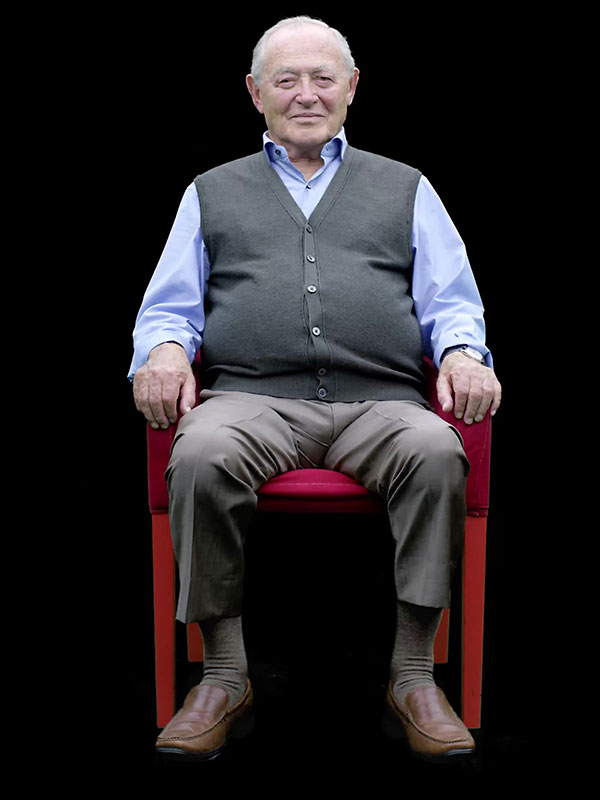
Nimrod ‘Zigi’ Ariav is a survivor of the Holocaust who now lives in Tel Aviv, Israel. Zigi was born Szulem Czygielman in Lublin, Poland, in 1926 to a Reform Jewish family consisting of his mother, father, and twin brother, Avraham. In 1939, the German army invaded and began persecuting the Jewish population. Although the Jews of the town were forced to wear armbands, Zigi decided to remove his armband (vowing to never wear it again), which allowed him to pass as a Polish gentile. The family fled to the smaller town of Belzcye in 1940 to join Zigi’s maternal family and escape some of the persecution they faced in Lublin. Although Zigi, Avraham, and their mother escaped the deportation to Majdanek, Zigi’s father was shot and killed during the transport. Zigi eventually moved to Warsaw under a false name, posing as a Polish refugee, and became actively involved with Armia Krajowa, the Polish resistance movement. His twin brother was killed in 1943 after his Jewish identity was discovered. Zigi fought as part of the Polish Home Army during the Warsaw uprising; he was injured and transported to a hospital in Krakow, where he was liberated by the Russians in March, 1945. After the war, he discovered his mother was still alive. He remained in a displaced persons camp for two years, eventually joining the Haganah in 1947. In 1948, he enlisted in Israeli Army through the Haganah and moved to Israel the same year and joined the Air Force. He married Holocaust survivor Odette Finkental and they had two sons.

Stanley Bernath was a survivor of the Holocaust who now lives in Cleveland, Ohio. Stanley was born Zoltan ‘Zoli’ Bernath in Carai, Romania in 1926. He grew up with a father, a mother, and two brothers. His youngest brother and father passed away before the war. The war began in Romania when the Hungarians invaded and occupied the country in 1940. In 1941, his older brother was sent to a forced labor camp where he would spend the rest of the war. In 1944, the Germans invaded Romania and forced the Jews into a ghetto. Stanley and his mother moved into the ghetto and were deported to Auschwitz. Stanley was then separated from his mother and spent the war in three other camps: Mauthausen, Melk, and Ebensee. He was liberated in Ebsensee by the Americans in 1945. After liberation, he was reunited with his older brother and mother in Romania. After spending some time in the DP camp, Stanley was able to immigrate to the United States in 1945. He later joined the U.S. Army and was stationed in Germany for four years serving in Army Intelligence. After his military service, he moved to New York where he worked as a taxi driver. He married Holocaust survivor Arlene Weiner and they had twin daughters. The family moved to Cleveland in 1955 and Stanley worked as an electrician and contractor.
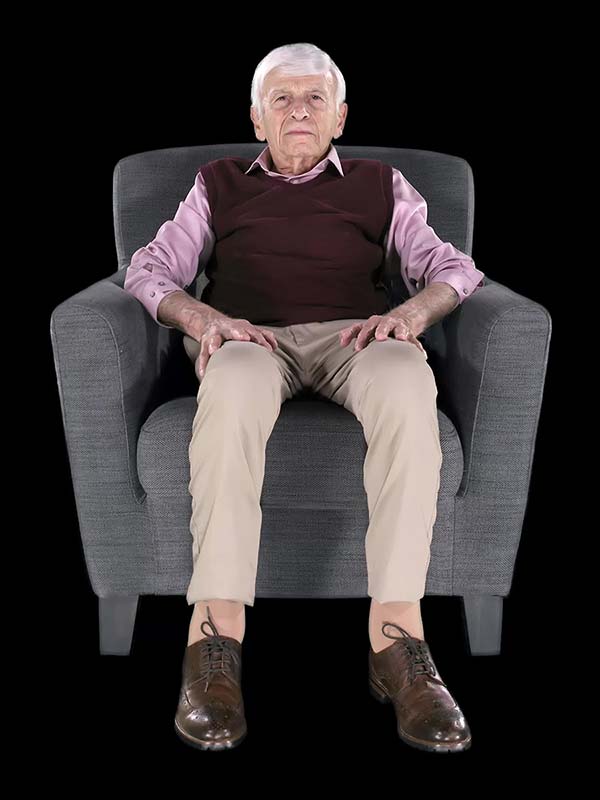
Max Eisen was a survivor of the Holocaust who lived in Toronto, Canada, when we recorded him for Dimensions in Testimony. Max was born Tibor Eisen in Moldava, Czechoslovakia in 1929 to an Orthodox family. He had two younger brothers, and a sister born during the war in 1943. When Czechoslovakia was partitioned in 1939, Hungarians occupied his town on his 10th birthday, immediately changing life in all ways. His family was deported in May 1944 for Birkenau, and all–save Max, his father, and his uncle–were immediately selected to the gas chambers. Max, his father, and his uncle worked as slave laborers until July 1944 when they were selected out, leaving Max as the sole survivor. Max then worked in the medical barracks of Auschwitz I under Dr. Orzeszko, a Polish political prisoner and chief surgeon of Auschwitz. In January 1945, he was sent on a death march to Mauthausen. From Mauthausen he was taken to Melk, and then to Ebensee, where he was liberated at Ebensee on May 6, 1945 by the 761st Black Panther Tank Battalion of the American army. After the war, he made his way back to Czechoslovakia and stayed until the Communist coup in 1949. Max immigrated to Canada in 1949, where he later met and married Ivy in 1952. They had twin sons. Max published his memoir in 2016, By Chance Alone. Max passed away in 2022.
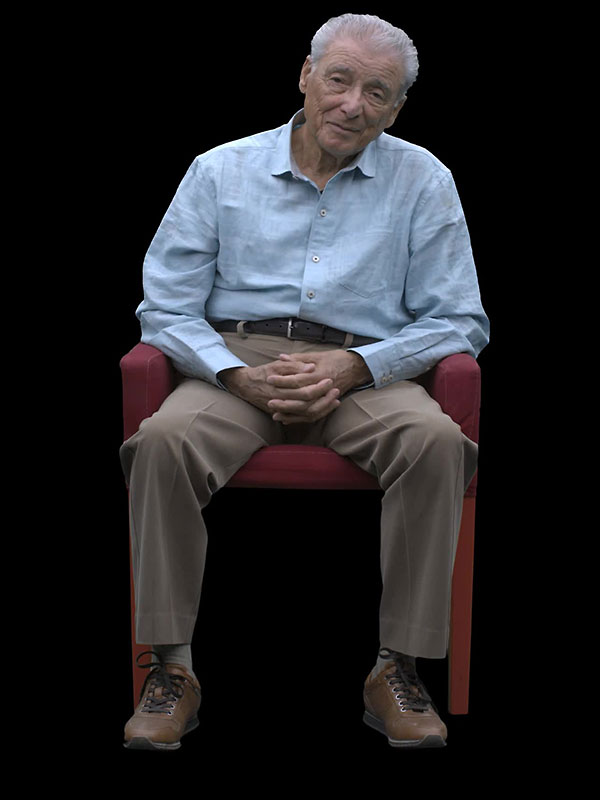
Aaron Elster was a survivor of the Holocaust who lived in Chicago, Illinois. Aaron was born in Sokolow Podlaski, Poland and was 6 years old when the war started. He, along with his parents and two sisters were forced into a ghetto in their hometown where they lived for two years. As the ghetto was liquidated, Aaron fled and was able to reunite with his mother. Aaron’s mother had arranged for a Polish family, the Gurskis, to take in Aaron’s older sister. Aaron’s mother told him to go to the Gurskis who agreed to hide him in their attic; that was the last time he saw his mother. He lived in hiding for two years until he was liberated by the Soviet Army in 1945. After the war, Aaron’s Uncle Sam (who had fought for the Russian Partisans during the war) arrived in Sokolow Podlaski to take care of Aaron and his sister. From 1945-46, the three of them went through a series of DP camps in Germany. In 1947, Aaron and his sister left Germany for the United States, arriving in New York and eventually settling in Chicago. In 1954, he joined the U.S Army and fought in the Korean War. He married Jacquline in 1954 and they had two sons. He was an active member of the Skokie survivor community, serving as the Chairman of the Speakers’ Bureau and Vice President at the Illinois Holocaust Museum and Education Center. Aaron passed away at the age of 85 in 2018.
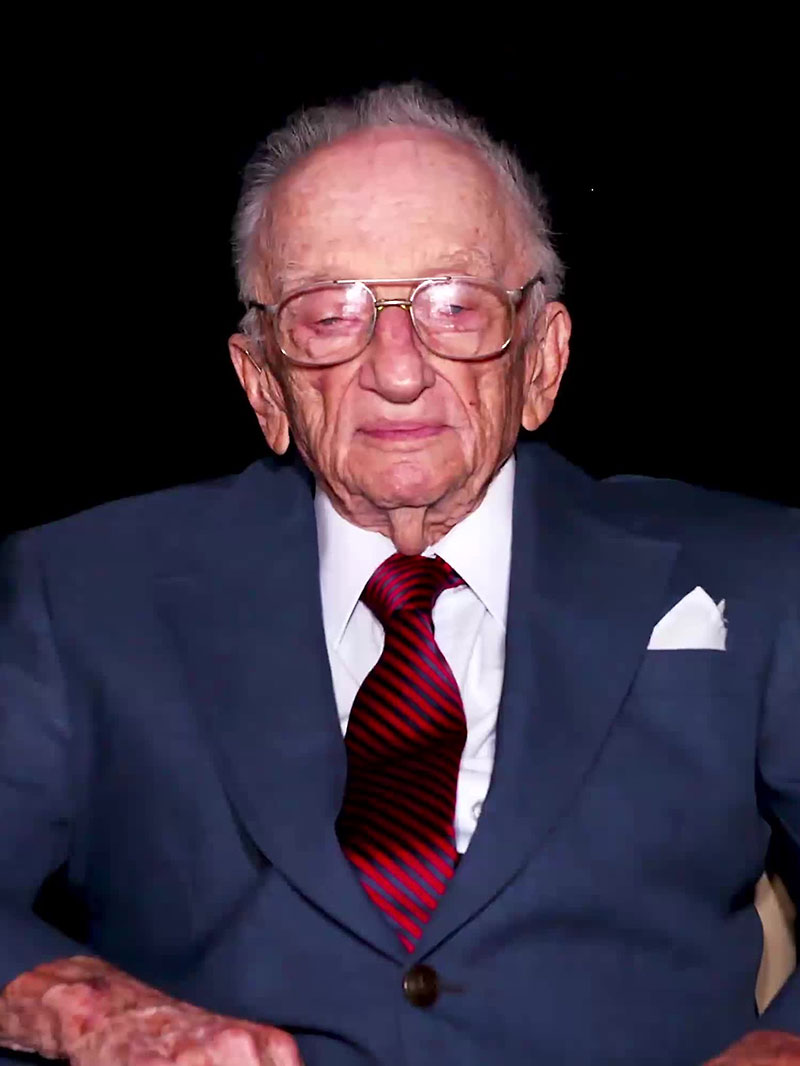
Ben Ferencz is an American lawyer, known especially for his work as an investigator of Nazi war crimes and as the chief prosecutor at the Einsatzgruppe Trial at Nuremberg.
Benjamin Berell Ferencz was born in 1920 in Transylvania, and immigrated with his family to Hell’s Kitchen of New York shortly after. After graduating Harvard Law School, in World War II he joined an anti-aircraft artillery battalion in the United States Army and served under General Patton. Near the end of the war, he was assigned to the Army’s war crimes division and was tasked with collecting evidence from the newly liberated concentration camps.
While he was honorably discharged after the war, he soon returned to Europe to join as the chief prosecutor at the Einsatzgruppe Trial at Nuremberg. He remained in Germany for a decade with his wife Gertrude and four children, and was key in organizing reparation and rehabilitation.
After practicing private law in the United States for some time, Ferencz focused on fighting atrocity crimes in the world. He advocated for the establishment of international law and the International Criminal Court, and has worked with the United Nations. To this day, he continues to speak out against violence, war, and injustice.
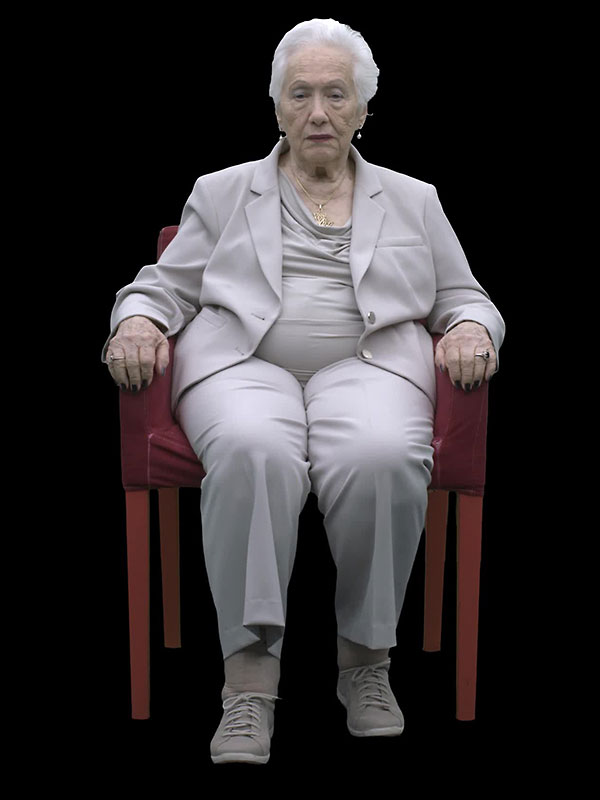
Renee Firestone is a survivor of the Holocaust who now lives in Los Angeles, California. Renee Firestone was born Renee Weinfeld in 1924 in Uzhorod, Czechoslovakia. She had an older brother, Frank, and a younger sister, Klara. The family was not very religious and her father made his living in the textile business. After years of Hungarian occupation, Renee and her family were sent to a ghetto in 1944. They were subsequently deported to Auschwitz II-Birkenau shortly after. Upon arrival in the camp, Renee’s mother was killed. Renee and her sister were sent to Birkenau. After a selection, Klara was chosen for experiments and Renee never saw her again. Renee was taken on a death march in the winter of 1944 to Liebau. She was liberated by the Russians in 1945. After the war, she returned to Prague where she was reunited with her brother Frank who had survived the war by fighting with the Partisans. The two of them found out that their father was very ill with tuberculosis in Theresienstadt. They had him transferred to a hospital to receive medical care, but he died soon after. Renee married Holocaust survivor Bernard Firestone in 1946 and they had a daughter born soon after. In 1948, the Firestones moved to the United States, eventually settling in Los Angeles, California. Renee become a well-known fashion designer and became involved with the Simon Wiesenthal Center and Museum of Tolerance in Los Angeles and the Los Angeles Museum of the Holocaust.
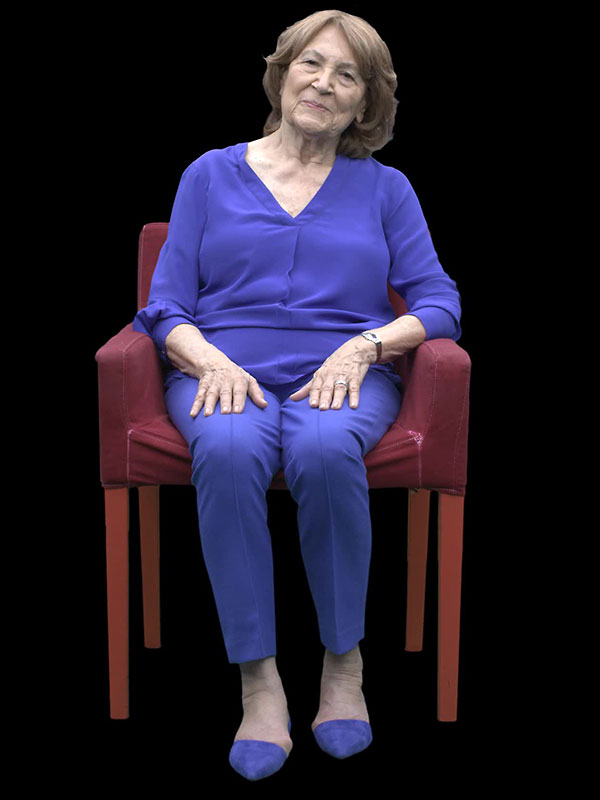
Fritzie Fritzshall was a survivor of the Holocaust who lived in Chicago, Illinois, at the time we recorded her for Dimensions in Testimony. Fritzie was born Fritzie Weiss in Klucharky, Czechoslovakia. She lived with her mother and two younger brothers; her father had immigrated to the United States in order to provide a better life for his family. In 1944, the Germans invaded Fritzie’s hometown and she and her family were forced into a ghetto. Shortly after, she and her family were deported to Auschwitz II-Birkenau, where her mother and two brothers were murdered. Fritzie worked as a slave laborer in the camp for nearly a year before being sent on a death march to Germany. She managed to escape the death march and was liberated by the Soviet Army in the spring of 1945. After the war, she moved to the United States in 1946 and reunited with her father. She eventually settled in Chicago, became a hairdresser, and married Norman Fritzshall. They have one son. She served as the President of the Illinois Holocaust Museum and Education Center. Fritzie passed away in 2021.

Max Glauben was a survivor of the Holocaust who was living in Dallas, Texas, when we recorded him for Dimensions in Testimony. Max was born Moniek Glauben in Warsaw, Poland in 1930. He had a younger brother and two parents. His father owned a Yiddish newspaper called the Tageblatt. In 1939, the Nazis invaded Poland and persecutions of Warsaw’s Jewish population began. The Warsaw Ghetto was established around the neighborhood in which Max and his family lived. Max and his father started smuggling items in and out of the ghetto. In 1943, the Warsaw Ghetto Uprising began near their home; Max and his family went into hiding for several weeks during the Uprising but they were eventually found by the Nazis. They were sent to Majdanek where Max’s mother and younger brother were immediately sent to the gas chambers. Max and his father were sent to work for an airplane factory in Budzyn. His father was killed in Budzyn. Max began working in an airplane factory pattern shop for a Nazi named Keller. Max spent the war working with Keller in Mielec, Wieliczka, Plaszow, and Flossenburg. On a death march from Flossenburg to Dachau the Nazi guards fled and Max was picked up and liberated by the American Army in 1945. After the war, Max moved to the U.S. in 1947. Max was drafted into the U.S. Army in 1951 and was sent to Fort Hood. In 1953, he received an honorable discharge from the U.S. Army and he moved to Dallas, Texas. He married Freida in 1953. The Glaubens had three children and Max began working with Frieda’s brother in Imperial Garment Supply. Max passed away in 2022.
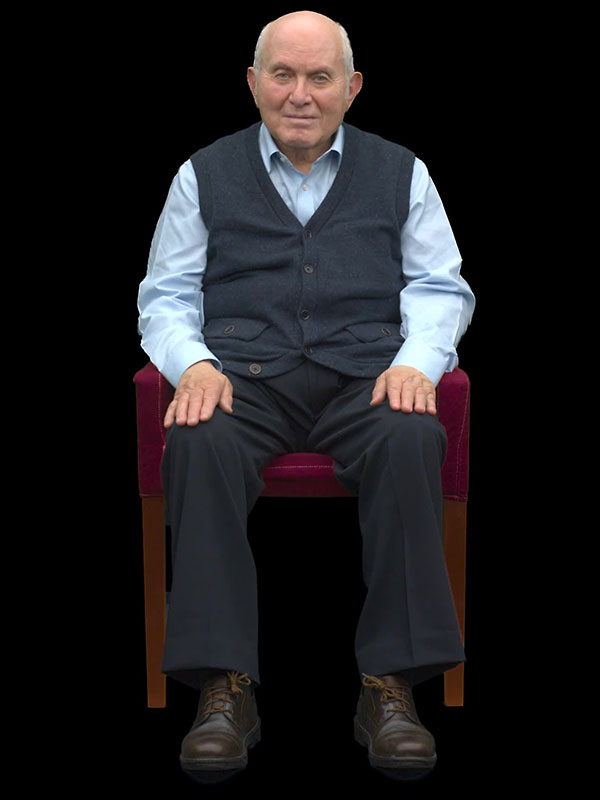
Pinchas Gutter is a survivor of six German Nazi concentration camps who now lives in Toronto, Canada. Pinchas was born in Łódź and was 8 years old when the war started. He, along with his twin sister and entire family fled to Warsaw, where they were confined in the Warsaw Ghetto for two and a half years. They were captured in April 1943 and deported to Majdanek death camp. When the family arrived at the camp, Pinchas' father, mother, and sister were murdered by the Nazis. After Majdanek, Pinchas was sent to Skarzysko-Kamienna, Czestochowa, Buchenwald, Colditz, and Theresienstadt. He was liberated in Theresienstadt by the Soviet Army on May 8, 1945. After the war, Pinchas was taken to orphanage in England that was run by UNRRA. In 1948 when he was living in London, a cousin in Paris discovered he was alive and invited him to live in Paris. He left Paris in 1950 and went to Israel where he volunteered for the army. After three years in the army, he worked for a textile factory. He left his work in the factory to go to school and learn Hebrew. As he was learning Hebrew, he met his wife, Dorothy. They moved to England and married there. He was then offered a job in Brazil and he lived in Sao Paolo for a year. Pinchas and Dorothy moved to South Africa after Brazil, and lived there until 1985 when they moved and settled down in Toronto. Pinchas and Dorothy had three children: two daughters and a son. Pinchas is still an active member of his community, serving as a cantor in his synagogue, and he still speaks and shares his story today.
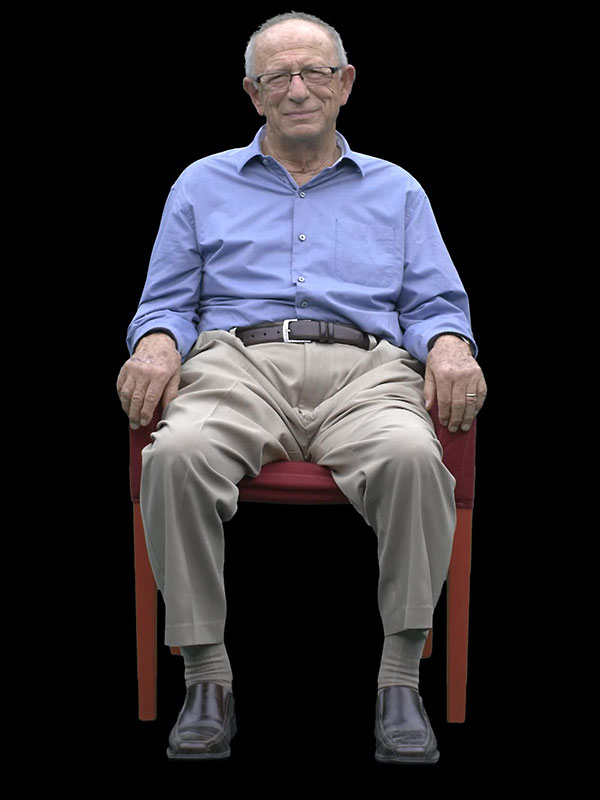
Sam Harris is a survivor of the Holocaust who lives in Chicago, Illinois today. Sam was born Szlamek Rzeznik in Demblin, Poland to a large Orthodox family. Sam was 4 years old in 1939 when the war began in Demblin. Sam, his seven siblings and his parents were forced to move into the ghetto. They lived there for almost three years before the ghetto was liquidated in 1942. Sam’s entire family with the exception of his sisters Sara and Rosa, were deported to Treblinka and murdered in the gas chambers. Rosa, Sam’s older sister, worked as a slave laborer in the concentration camp outside of Demblin and she was able to hide both Sam and his sister Sara in the camp. In 1944, Sam, Rosa, and Sara were transported to Czestochowa where Rosa was again able to hide her two siblings. The three of them were liberated by the Soviet Army in 1945. Rosa and the husband she had married in Demblin, Walter, left for Austria to find remaining members of his family. Sam and Sara were placed in an orphanage. In 1946, Rosa smuggled out both Sam and Sara to Austria and arranged for both of them to move to New York City. The two siblings moved to the United States in 1947 and both were adopted by two different families. Sam was adopted by the Harris Family and he moved to Chicago. After graduating from college, he worked for Equitable Life Insurance and married Janice (‘Dede’). They had two children. Sam is still active member of the survivor community in Chicago and played an instrumental role in helping to build the Illinois Holocaust Museum and Education Center, of which he is President.
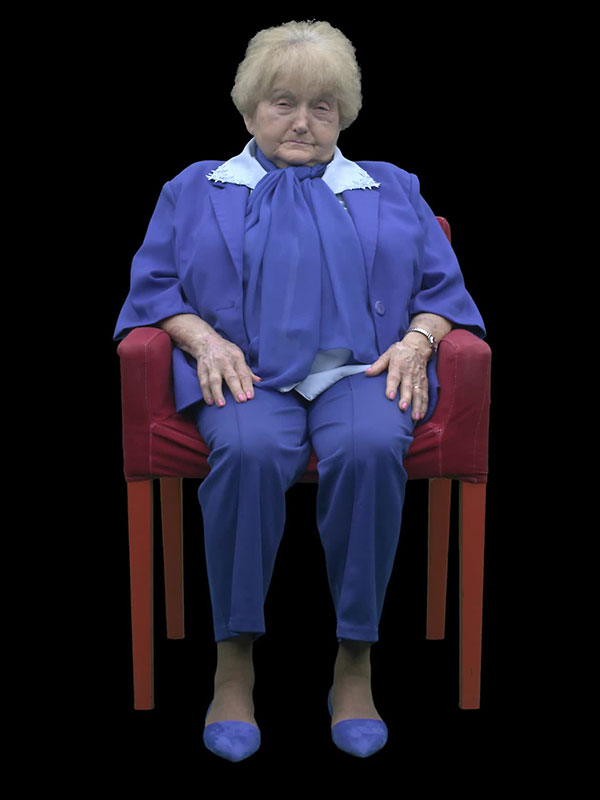
Eva Kor was a survivor of the Holocaust who lives in Terre Haute, Indiana. Eva Kor was born Eva Mozes in 1934 in Portz, Transylvania, Romania. She and her twin, Miriam, had two older sisters. The Hungarians later annexed her hometown and her family was sent to live in the town’s ghetto. After living in the ghetto for a few weeks, Eva and her family were deported to Auschwitz II-Birkeanu. The family, with the exception of Eva and Miriam, were gassed upon arrival. The twins were selected by Dr. Josef Mengele for experiments. Eva and Miriam were subjected to daily experiments that often made the girls very ill. Eva and Miriam were liberated by the Russians in January 1945. After the war, Eva and Miriam lived with an aunt in Cluj, Romania from 1945-1950. Eva, Miriam, their aunt and her husband moved to Israel in 1950. In 1952, the twins were drafted into the Israeli Army. In 1960, Eva met fellow survivor Michael Kor and they married in 1960. They moved to Terre Haute, Indiana in 1960 and had a son and a daughter. In 1984, Eva founded the organization C.A.N.D.L.E.S (Children of Auschwitz Nazi Deadly Lab Experiments Survivors) and the CANDLES Holocaust Museum and Education Center in Terre Haute, Indiana. Eva is still very involved with CANDLES Holocaust Museum and Education Center and travels all over the United States, sharing her story with students and organizations. Eva Kor passed away in 2019.
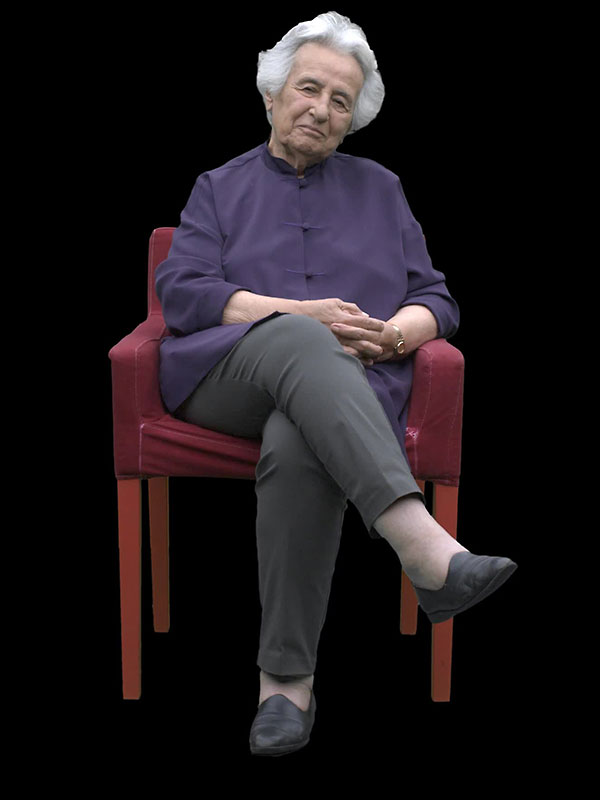
Anita Lasker Wallfisch is a survivor of the Holocaust who lives in London, England. Anita was born in Breslau, Germany, in 1925. She was the youngest and had two older sisters. Her father worked as a lawyer, and her mother was a violinist. Anita picked up the cello very early on and was sent to Berlin when she was twelve to work with a cello teacher. After Hitler and the Nazis took control of Germany, life quickly changed. Anita moved back to Breslau quickly after Kristallnacht. Her mother and father were deported and she never saw them again. While working in a paper factory, Anita and her sister Renata began helping French P.O.W.’s and made a plan to escape to France using false papers. Their plan was discovered and Anita was set to prison. She served half a year of her sentence and was sent to Auschwitz. She was saved from the gas chambers when it was discovered she was a cellist; she played in the camp orchestra until November 1944 when she was transported to Belsen. She and Renata were liberated by the British Army in 1945. After liberation, she and Renata immigrated to England to reunite with their eldest sister Marianne who had managed to flee to England before the war. Anita began learning cello again and became a founding member of the English Chamber Orchestra. In 1952, she met fellow musician, Peter Wallfisch (a pianist) and they married. They had two children, a son and a daughter. Anita is still actively speaking and sharing her story today.

William Morgan is a survivor of the Holocaust who lives in Houston, Texas. William was born Wolf ‘Yossela’ Marguiles in Czerniejow, Poland in 1925. He and his six other siblings were raised in poverty and practiced Orthodox Judaism. In 1939, the Russians began to occupy his hometown. In 1941, the Hungarian army marched into Czerniejow and severe persecution of the Jews began. William’s grandfather was drowned in the river by the Hungarians and the rest of the family was sent to live in a ghetto in Stanislawow. While in the ghetto, William was able to work as a farmhand outside of the ghetto and he was able to move in and out for three months. After being forced to dig a mass grave for Jews from the ghetto who were subsequently executed, he made plans to escape the ghetto. He left his parents and siblings in the ghetto after obtaining a Polish Christian birth certificate. He fled to Jezierzany, Ukraine and worked as a farmhand for four years, concealing his Jewish identity. He was drafted into the Polish branch of the Soviet Army in 1944, and was sent to Katowice, Poland. He deserted the army and in 1945 began working as a civilian driver on the black market. He moved to a DP camp in Frankfurt, Germany where he waited for his visa to move to the United States. He immigrated to the U.S. in 1949, first to Cedar Rapids, Iowa where he worked in a shoe store. He moved to Houston, Texas in 1950. In 1954, he married a local woman, Shirley, and they had five children. He eventually created a thriving real-estate business that still operates today. He is one of the founders of the Houston Holocaust Museum.

Ed Mosberg was a survivor of the Holocaust living in Morris Plains, New Jersey, at time we recorded him for Dimensions in Testimony. Ed was born to a non-religious family in 1926. He, along with his two sisters, grew up in Krakow, Poland. In 1939, the Nazis invaded Poland and the war began. Ed and his father fled to a smaller town outside Krakow because men were being forced into hard labor. His father was rounded up and killed at a police station. Ed went back to Krakow and he along with his mother and two sisters were forced into the ghetto. In 1943, the Krakow ghetto was liquidated and the Mosberg family was sent to Plaszow, a labor camp. The labor camp was run by Amon Goeth, whom Ed met and worked under. In 1944, Ed’s mother was sent to Auschwitz and his sisters were sent to Stutthof. Both his mother and sisters are killed in the camps they are sent. He was deported to Mauthausen and is eventually sent to Linz. He was liberated from Linz in 1945. After the war, he reunited with Cecile, a girl he had met in Plaszow, and she along with Ed and her father moved to Belgium. Cecile and Ed married in 1947 and they have their first daughter in 1950. Ed, Cecile, and their daughter received visas to immigrate to the United States in 1951 where they first settled in New York. Ed eventually broke into the construction business and he and his family moved to Morris Plains. Ed passed away in 2022.
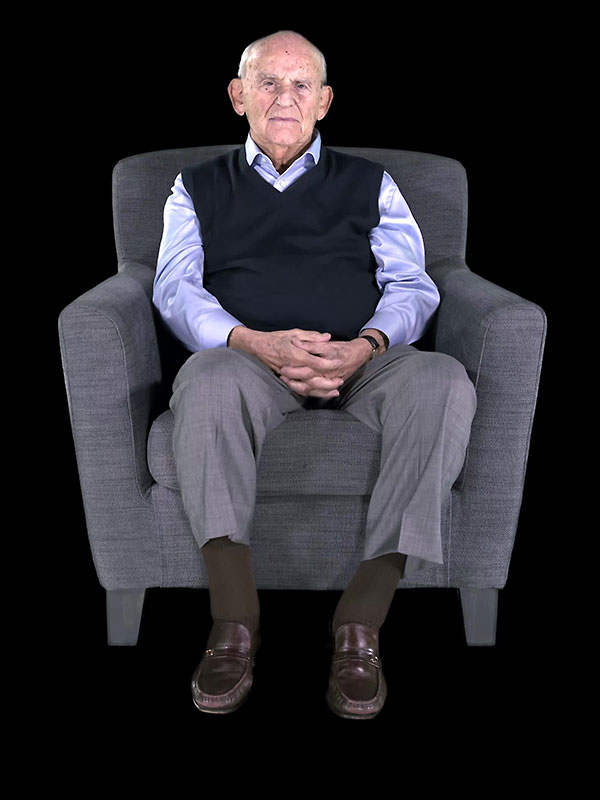
Alan Moskin is a veteran of World War II and liberator of the Gunskirchen Concentration Camp who now lives in Rockland County, New York. Alan Robert Moskin was born in 1926 in Englewood, New Jersey. His father was a pharmacist, served as elected city official, and eventually became one of the few Jewish mayors in New Jersey. When Alan was 16, the Japanese bombed Pearl Harbor, and America entered the war. In October 1944, Moskin was drafted in the US army and after completing his basic training Alan was deployed to England as a Private First Class in Patton’s Third Army, 66th Infantry, 71st Division. Alan fought on the front line across France through the Rhineland and into Austria. In May of 1945, Alan’s unit liberated a prisoners of war camp in Lambach, Austria and then they liberated the Gunskirchen Concentration Camp, a sub-camp of the Mauthausen concentration camp, where Alan and his fellow soldiers learned for the first time about Nazi mass murders of Jews and were shocked with suffering of the prisoners. Alan met the Victory Day in Europe in Wels, Austria. Until he was honorably discharged in June 1946, Moskin served in the army of occupation in Austria. He attended the Nuremberg Trials during this time. After the war, Alan returned to his studies in Syracuse University and then to New York University where he obtained his JD in 1951. Together with his ex-wife Krista, he has two daughters. After Alan has retired from his career in trial law and civil litigation, he spends his time volunteering with Jewish war veterans, speaking to students, working with local Holocaust museums, and as a volunteer color guard at naturalization ceremonies.
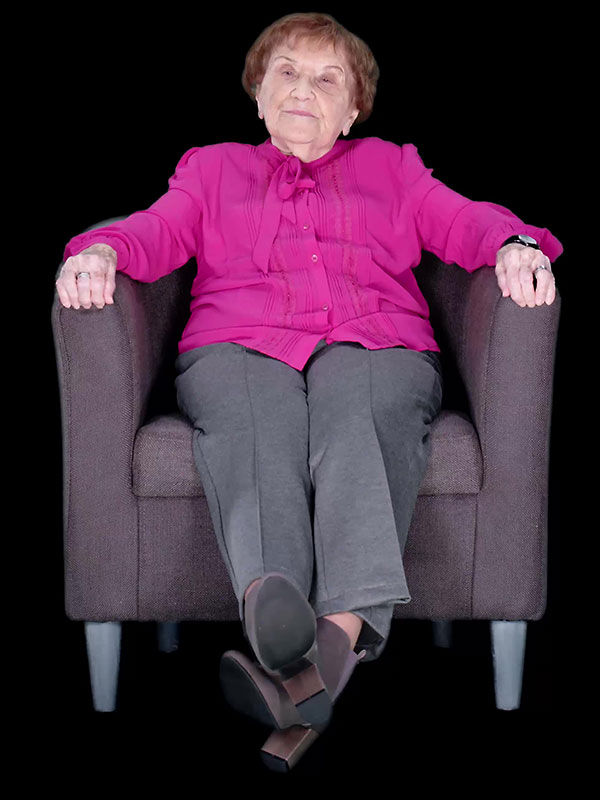
Lea Novera is a survivor of the Holocaust who now lives in Buenos Aires, Argentina. Lea Novera was born Liza Zajac in 1926 in Hajnowka, Poland to parents Ester and Aaron Zajac. She and her two siblings grew up in a lower middle class family and Lea attended Polish school. When the war began, they lived first under first Soviet and later Nazi occupation. In 1942, the family was forced to move to Pruzany ghetto and in 1943, they were deported to the Auschwitz camp complex. Upon arrival, Lea’s parents and siblings were murdered in the gas chambers. Her mother saved her by shouting to her to go with the “stronger looking” group and her aunt Sara; Lea lied about her age and became a slave laborer. After being struck in the knee, she developed tuberculosis and was infirmed in the camp hospital. There, she befriended a doctor who saved her from selections and helped to her survive. She was saved again when a secretary erased her name from a death order signed by Dr. Mengele. Lea eventually joined a cell of women who planned multiple acts of sabotage around the camp, including the dynamiting of the crematorium. She was sent on a death march with Sara in January 1945 and was liberated by Soviet Forces in April. Lea immigrated illegally to Argentina and married Holocaust survivor and partisan, Marcos Novera. They had two sons. She is an early member of the Holocaust Museum in Buenos Aires and the group Generations of the Shoah and wrote the memoir Historias de Mi Mochila.

Janine Oberrotman was born Janina Binder in 1925 in Lvov, Poland. She was an only child and her father owned a successful shipping business. For the most part, Janine was raised by her mother, who was extremely protective of her only child. A love for the written word permeated the home, as well as a love for music. The family was not very religious, and Janine had many gentile friends. An excellent student, Janine gained entry to a prestigious state high school, despite limitations on enrollment for Jewish students.
In 1941, Janine was recovering from a serious bout of Scarlet Fever when the German Army entered Lvov, following the Soviet retreat. Soon after, the Lvov ghetto was created, and Janine’s family was forced to give up their home and move there. Janine’s grandfather was taken and killed along with other elderly Jews. Janine’s father was captured while carrying a bag of potatoes to feed his family, and then deported to Janowska Concentration Camp, where he was later killed. Janine and her mother fled from hiding place to hiding place, narrowly evading capture numerous times. With her mother’s help, Janine managed to escape the ghetto and find her Aunt Wanda, who was living in another part of Lvov under an assumed identity. Using papers she obtained from a gentile friend, Janine was able to travel to a Ukrainian village where her maternal uncle and grandmother were hiding as Catholics. There, Janine learned of her mother’s death during the liquidation of the Lvov ghetto, and the subsequent suicide of her Aunt Wanda, who feared that under torture she might give up the whereabouts of her family. In 1943/44 Janine was arrested and transported back to Lvov on suspicion of being Jewish. Lacking evidence about her origins, the Gestapo sent her to Stuttgart to work as a Polish forced laborer. Janine survived the rest of the war working in a restaurant as a non-Jewish Pole. She was liberated by the French Army in spring 1945.
After the war, Janine moved to Paris, and in 1946 was interviewed for the first time by American psychologist David Boder. In 1950 Janine married Joseph Oberrotman, a survivor of the Warsaw Ghetto. The couple had their first son in Paris. In 1953 the new family moved to the US and settled in Chicago, where they had two more sons. In Chicago, Janine worked as a French teacher and a vocational counselor for refugees arriving in the US. She also shared her experiences with thousands of students, teachers, law enforcement personnel, and others, inspiring them with her story of courage, resilience, hope and survival.
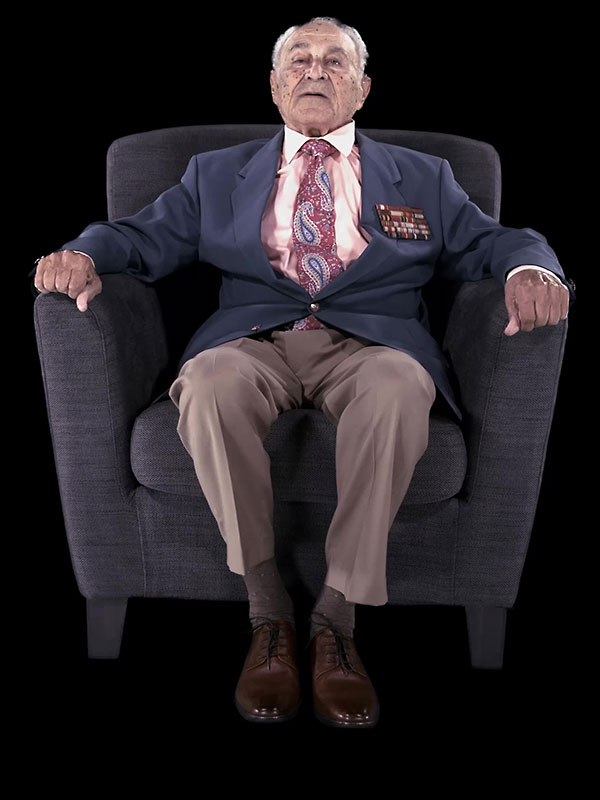
Leonid Borisovich Rozenberg was born in September 1921 in Iziaslav, Ukraine. Later, his family moved from Kamenets-Podol’sk to Zhitomir oblast. His father participated in the Russian Civil War on the Bol’shevik side and later worked at a factory and his mother worked as a teacher and then as a pharmacist. On June 6, 1941, Leonid graduated from an artillery school and was sent to the city of Lida near the border with Germany occupied Poland where he met the first day of the Great Patriotic War. His father was drafted to the Soviet army in 1939 and his mother with his younger brother and sister stayed in Zhitomir oblast where they were killed by Germans in September 1941. During the first days of the war, he was wounded and encircled by German forces, but was able to reach a Soviet military unit. After about a month at a hospital, Leonid Borisovich returned to the army and participated in the battle of Caucasus in 1942-1943, battle of Kursk, battle of Dnieper, Vistula-Oder Offensive, and Berlin Offensive. He met the Victory Day in Berlin. For his service, Mr. Rozenberg was awarded with several awards, including the order of the Red Banner. After the war, Leonid Borisovich stayed in Germany within the Group of Soviet Occupation Forces. In the late 1950s, he graduated from the Frunze Military Academy and served in the Soviet Army until his retirement. In 1991, he immigrated to the USA and has been serving as the President of the American Association of Veterans & Invalids of WWII.
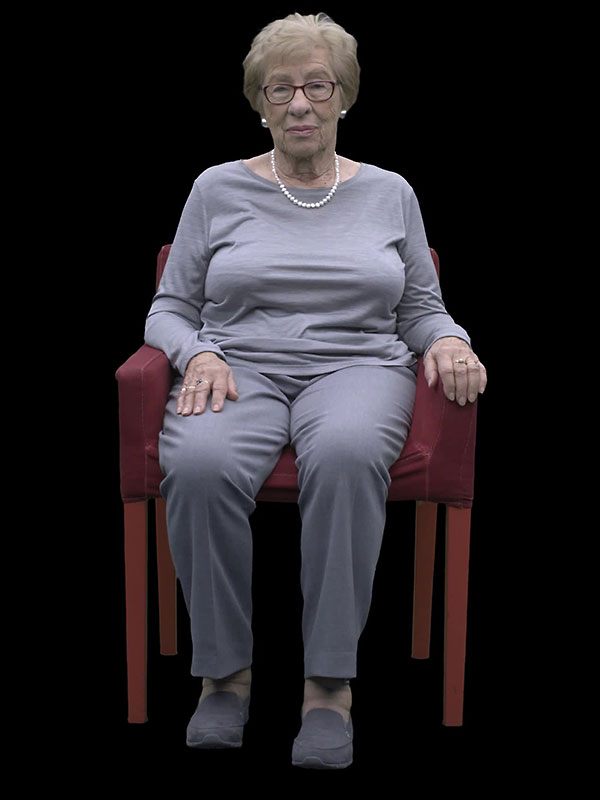
Eva Schloss is a survivor of the Holocaust who lives in London, England. Eva was born Eva Geiringer in Vienna, Austria, in 1929 to Erich and Fritzi Geiringer. Eva had an older brother named Heinz with whom she was very close. They were an upper-middle-class, nonreligious family, who made their living thanks to a shoe factory that Erich owned. In 1938, Germany annexed Austria in an event known as the Anschluss. Laws against Jews were immediately enacted and the family made plans to flee to the Netherlands. Eva’s father was able to move to Amsterdam in 1939 and the rest of the family joined in 1940. The Geiringers met the Frank family during their time in Amsterdam; as young girls, Eva and Anne were neighbors. In 1942, after the Nazis occupied the Netherlands, Eva and her family went into hiding. On Eva’s 15th birthday in 1944, the family was betrayed and sent first to Westerbork Concentration Camp and then to Auschwitz II-Birkenau. Eva’s father and brother died after they were sent on a death march to the Mauthausen concentration camp. Eva and her mother spent the war together in Birkeanu and were liberated by the Soviet Army in 1945. After the war, they moved back to Amsterdam and reconnected with Otto Frank. Eva moved to London and married Zvi Schloss. Eva’s mother Fritzie and Otto Frank later married as well, making Eva Anne Frank’s posthumous stepsister. Eva and Zvi would go on to have three daughters and five grandchildren. Eva is a cofounder of the Anne Frank Trust UK and is still very active today sharing her story without groups all over the world.

Adina Sella is a child survivor of the Holocaust who currently lives in Chicago, Illinois. Adina was born Peggy Schaufeld in Hamburg, Germany in 1935. In 1939, her father was arrested in Germany for having Polish origins and was only released when Adina’s mother secured visas to move the family to Italy. They had planned on going to to Shanghai from Italy but while en route were marooned in Italy due to the war. They settled first in Arezzo where they posed as Catholics. In Arezzo, Adina and her brother attended a school at a convent, where the nuns treated them kindly and protected their Jewish identity. When the nuns and priests learned that the Germans were advancing toward Arezzo, they warned the Schaufelds who fled with the assistance of the the Italian underground to transfer to Anghiari. The Marconi family hid Adina and her family and they were liberated in the spring of 1944 in the town of Verazzano. In 1945, the Schaufeld family moved to then-Palestine where Adina attended school until she joined the Israeli army. In 1956, she left Israel to study psychology in Switzerland where she met her husband Michael Sella. In 1963, Adina and Michael moved to Chicago, Illinois where they operated a medical center together. Adina and Michael had one daughter.
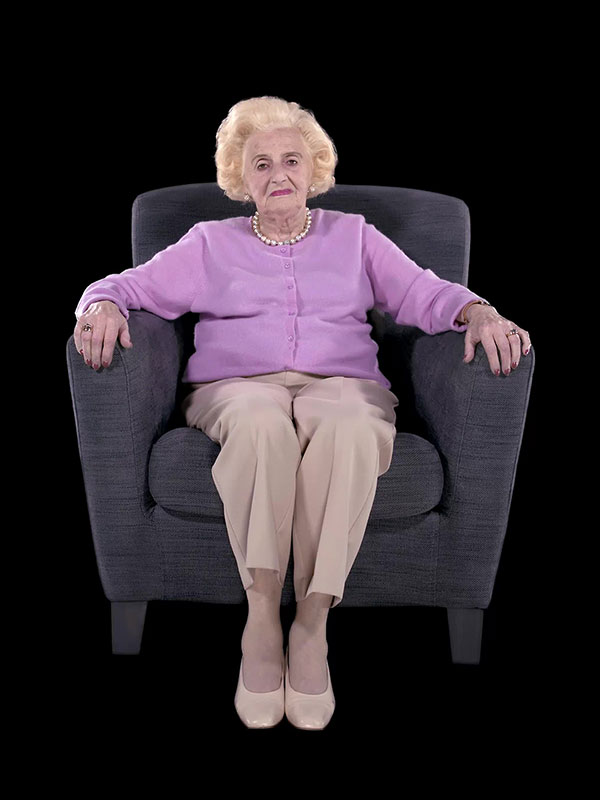
Asia Shindelman is a survivor of the Holocaust who now lives in Wayne, New Jersey. Asia Shindelman was born Asia Levin in 1928 in Siauliai, Lithuania. Her father was a hairdresser and owned a hair salon. Asia had an older brother Zev. The family observed Jewish religious traditions and Asia studied at a Hebrew school. After Lithuania was annexed by the USSR in June 1940, the Soviet authorities seized Asia’s father business and Asia could continue her education only in Yiddish. On June 25, 1941, three days after Germany invaded the Soviet Union, Siauliai was occupied by German troops who introduced anti-Jewish measures and organized anti-Jewish roundups and arrests. Asia’s family lost track of her brother, who was at the time in Kaunas, and lately they realized that he was killed during the first days of the Nazi occupation. In August 1941, Asia was forced into the ghetto with her parents, uncle, and grandmother. In July 1944, Asia and her family were deported to Stutthof concentration camp. In Stutthof, she and her mother were separated from her father and uncle, who were transferred to Dachau concentration camp. Asia’s grandmother was immediately killed in a gas chamber. In a few weeks, Asia and her mother were transferred to Malken concentration camp and then to Dörbek, another Stutthof subcamp. Asia worked as a slave laborer in the camps, building military fortifications, until January 1945 when prisoners were sent on a death march. On March 10, 1945, Asia and her mother were liberated by the Soviet army near the village of Chinow in Pomerania, then Germany, now Poland. Three months later, they reunited with Asia’s father and together returned to Siauliai. In 1950, her father was sentenced to ten years of imprisonment allegedly for “anti-Soviet activities”, but was released in 1955. She married Yudel Shindelman in 1950 and they have two sons. Asia graduated from Riga University and worked as a chemical engineer in Riga, Latvia. Asia and her family immigrated to the USA in 1991. Asia regularly shares her story with schoolchildren and members of local community. In 2019, Asia was invited to witness in the trial of a former Stutthof camp guard.

Israel ‘Izzy’ Starck is a survivor of the Holocaust who lives in Chicago, Illinois. Izzy was born Israel Storch in 1929 in Podhorany, Czechoslovakia. He and his three sisters were raised in an orthodox household. After the Germans invaded his hometown in spring 1944, the Storch family was taken to the Munkacs ghetto and deported to Auschwitz II-Birkenau where Izzy was separated from his sisters and mother. He later learned his mother was gassed upon arrival. Izzy lied about his age during the selection and entered the camp with his father. Izzy and his father were then sent to Mauthausen where they were separated and his father died in Gusen. Izzy was then sent from Mauthausen to Melk, where he dug tunnels for the German air force. In early 1945, Melk was evacuated and he was sent to Ebensee where he was liberated from by the Americans on May 8, 1945. After the war, the American Army took Izzy back to his hometown of Podhorany, where he found that his two older sisters had survived the war. In 1948, Izzy and his sisters immigrated to the United States and he settled in Chicago. He started his own diamond cutting company. In 1957, he married Ethel and they had seven children. He and his family remained Orthodox.
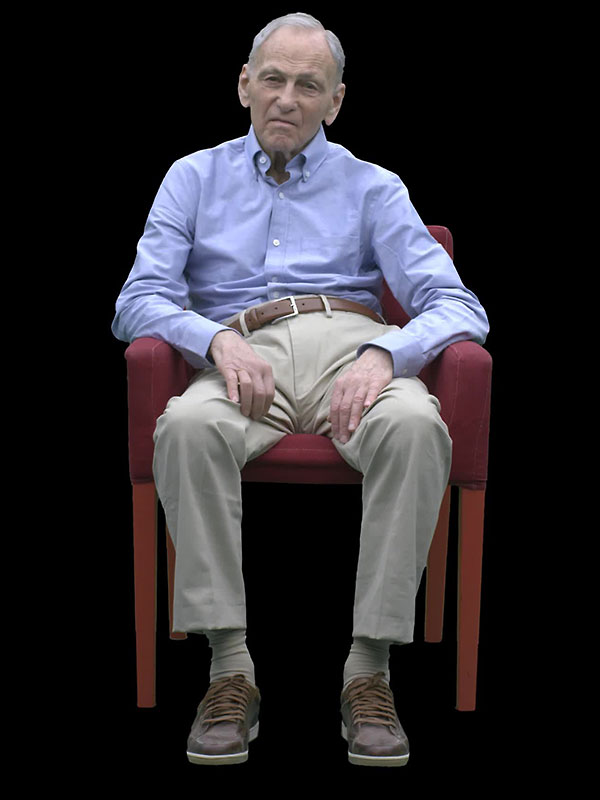
Matus Stolov is a survivor of the Holocaust who lives in Chicago, Illinois. Matus was born in 1928 in Minsk, Belorussia. He had one older brother, Boris. In 1936, Matus’ father died of natural causes. Under Soviet laws, all expression of Jewish life ended in 1934, so Matus received no religious education growing up. He only celebrated Soviet holidays. In 1941, Germany invaded Minsk and a ghetto was built around the Jewish section of the city. Boris was able to escape, but Matus and his mother were forced to live with another family. Routine actions took place in the ghetto were the Jews were taken out and shot in mass executions. Matus and his mother survived this by hiding with the help of a Christian friend named “Big” Yelena. In 1942, “Big” Yelena arranged for Matus and his mother to be smuggled out of the ghetto by the Partisans. In 1942, they crossed the front lines and settled in Kazan. They were liberated in June 1945 and returned to Minsk. After liberation, Matus and his mother received a notice that Boris had been killed in combat when he was serving in the Red Army. After the war, Matus finished University where he was studying to become a mechanical engineer. In 1952, he married Victoria, a woman from Minsk whom he had known since grade school. In the early 1980’s, Matus was able to immigrate to the United States after ten years of trying to leave the Soviet Union. He, Victoria, and their daughter settled in Chicago.
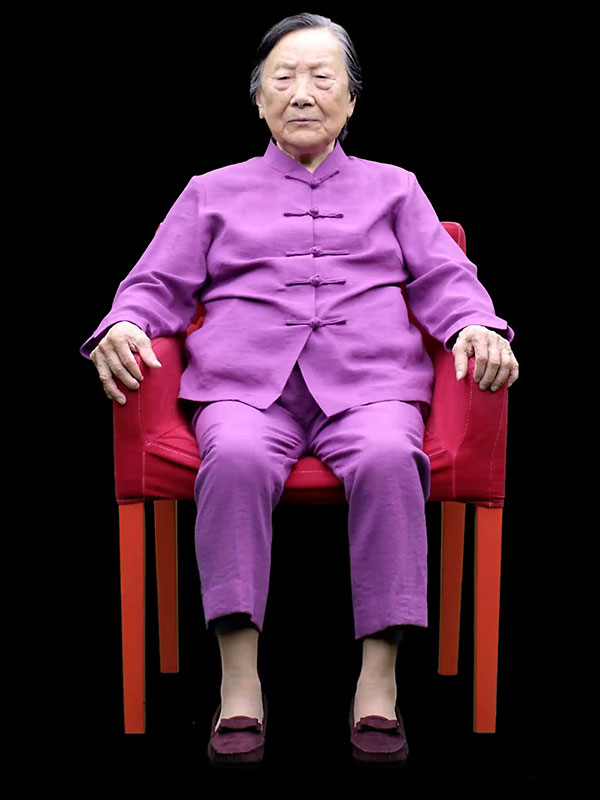
Madame Xia is a survivor of the Nanjing Massacre who resides in Nanjing, China today. Xia Shuqin was born in Nanjing in 1929, to a family consisting of her parents, two older sisters, and two younger sisters. On December 13, 1937, the Japanese army entered the city of Nanjing, and began a series of rampage and massacre of innocent Chinese people. On that day, Madame Xia’s family faced the same fate. After the family had just eaten breakfast on December 13, Japanese soldiers broke into Madame Xia’s home and killed her parents, three of her sisters, her two grandparents, and another family of four. Madame Xia woke up to a home of a brutally murdered family, wounds on her back, and her four-year-old sister, still alive, crying for help. Madame Xia and her sister hid in the house for ten days with minimal water and food, and were finally rescued by old people living in an elderly home nearby. After a few weeks at the old people’s home, Madame Xia’s uncle, who fled Nanjing before the massacre, took Madame Xia and her sister in. Madame Xia lived with her uncle intermittently until the end of the war, and her living conditions improved significantly after the Communist Revolution and formation of the PRC in 1949. Madame Xia is one of the most active survivors of the Nanjing Massacre. After the war, she travelled multiple times to Japan to speak with scholars and sue right-wing members that denied the Massacre. She also spoke regularly at the Nanjing Massacre Memorial Hall in Nanjing, doing all she can to spread awareness on Chinese history. Today, Madame Xia has three children, three grandchildren, and four great grandchildren. She lives by herself with the support of her family and local community.